GrabCAD
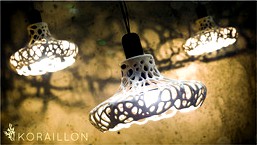
Koraillon Light the Way Entry
by GrabCAD
Last crawled date: 3 years, 2 months ago
Insipational Feeds:
The thematics concerning the generative design, in my opinion, are strictly bounded to the nature of natural laws. The suggestion given about art, energy and music translate in an organic mixture of meanings regarding the rules of the physics.
I noticed that it was inevitable not to start from the definition on energy as it presents in the known existing, it means in a chaotic way. Everything we see is ruled by the continous movement of energy in different state of entropy and that forges the shape of everything and with it the ideal of beauty which is since forever interpreted by art and music. Designing something with appealing aestethics means designing following the rule of the nature and in this case is absolutely crucial the use of a generative strategy. We can totally see how such kind of behaviors are seen often: water flowing, sparks in motion, ant's walking path, trees, the spread of Physarum and last but not least the coral.
The coral has an extremely interesting behavior, his shape can change due to an infinite kind and amount of parameters (water temperature, flow, composition, tenor and so on) but still at the end it finds a totally recognizable shape even if none coral is similar to the other. So how we can translate those properties to our design?
Generative Design Workflow:
For that purpose I used Grasshopper algorithms to emulate every kind of behavior (the algorithms used are provided):
The flocking behaviour is achieved throughout the Culebra plugin. A base shape and a population is given, than through the management of the alignment, crawling, separation and cohesion the lines are generated. These processes, even if not literally random, have so many variables that every design is unique therefore PURELY generative. The parametric properties give us the capability of growing the coral on every desired shape.
An important step is to simulate also the auto arranging behavior. Coral while growing tends to stick together to the closest seed and move away from the far one which instead get closer to another seed.
Eventually to simulate how the calcium deposits from the polyps (just like enamel deposits on teeth or calcium on stalactites) I run a marching cube algorithm through Cocoon plugin which returns isosurfaces and thereafter refined mesh. The mesh got eventually shortly manipulated to achieve the mechanical function.
Function and printability:
The design has an extremely high flexibility and ease of use. The lampshade is based on the most common size of E27 lamp holder and it can be used as a pendant lamp or a table lamp just by switching side and screwing the holder on it. The lamp provides an astonishing shading effect, as show in the raytraced renders, due to the bulb position. The shape flexibility is shown by the providing of 3 different lamp shade. The lamp number 2 has to be printed in 2 parts. The design tries to reduce to 0 the need of support by shaping the base form on angles that don't exceed 45°, that is not applicable to the lamp number 3 which needs supports. To reduce the risk of mistakes i provided both the supported and non supported version. The supports are obtained throughout a self made algorithim which is also provided. The voxel system should give a self supporting structure and the autoarrange process should drammatically decrease the amount of used material.
The thematics concerning the generative design, in my opinion, are strictly bounded to the nature of natural laws. The suggestion given about art, energy and music translate in an organic mixture of meanings regarding the rules of the physics.
I noticed that it was inevitable not to start from the definition on energy as it presents in the known existing, it means in a chaotic way. Everything we see is ruled by the continous movement of energy in different state of entropy and that forges the shape of everything and with it the ideal of beauty which is since forever interpreted by art and music. Designing something with appealing aestethics means designing following the rule of the nature and in this case is absolutely crucial the use of a generative strategy. We can totally see how such kind of behaviors are seen often: water flowing, sparks in motion, ant's walking path, trees, the spread of Physarum and last but not least the coral.
The coral has an extremely interesting behavior, his shape can change due to an infinite kind and amount of parameters (water temperature, flow, composition, tenor and so on) but still at the end it finds a totally recognizable shape even if none coral is similar to the other. So how we can translate those properties to our design?
Generative Design Workflow:
For that purpose I used Grasshopper algorithms to emulate every kind of behavior (the algorithms used are provided):
The flocking behaviour is achieved throughout the Culebra plugin. A base shape and a population is given, than through the management of the alignment, crawling, separation and cohesion the lines are generated. These processes, even if not literally random, have so many variables that every design is unique therefore PURELY generative. The parametric properties give us the capability of growing the coral on every desired shape.
An important step is to simulate also the auto arranging behavior. Coral while growing tends to stick together to the closest seed and move away from the far one which instead get closer to another seed.
Eventually to simulate how the calcium deposits from the polyps (just like enamel deposits on teeth or calcium on stalactites) I run a marching cube algorithm through Cocoon plugin which returns isosurfaces and thereafter refined mesh. The mesh got eventually shortly manipulated to achieve the mechanical function.
Function and printability:
The design has an extremely high flexibility and ease of use. The lampshade is based on the most common size of E27 lamp holder and it can be used as a pendant lamp or a table lamp just by switching side and screwing the holder on it. The lamp provides an astonishing shading effect, as show in the raytraced renders, due to the bulb position. The shape flexibility is shown by the providing of 3 different lamp shade. The lamp number 2 has to be printed in 2 parts. The design tries to reduce to 0 the need of support by shaping the base form on angles that don't exceed 45°, that is not applicable to the lamp number 3 which needs supports. To reduce the risk of mistakes i provided both the supported and non supported version. The supports are obtained throughout a self made algorithim which is also provided. The voxel system should give a self supporting structure and the autoarrange process should drammatically decrease the amount of used material.
Similar models
grabcad
free

CORALLO
...final result.
i'm currently enrolled in the following university in the architecture department.
https://www.dda.unich.it/
grabcad
free

Relentless lamp.
... of it.
finally, both energy and vibrations flow, for this reason the unstoppable light beams come out through the lamp cracks.
cg_trader
$3

Parametric Vase | 3D
...oral. ideal as a centerpiece for a modern home. the polysurface is a closed polysurface ready to be printed through a 3d printer.
grabcad
free

Generative Design - Lamp Shade
...ration from a flower (dahlia) for this lampshade design. quite amazing to see how nature designs using generative pattern/design.
grabcad
free

How is energy stored in grains?
... flows from crop plant to crop seed, to dormant stored seed, and then to the body tissues of the insects feeding on stored grain.
grabcad
free

Energy Growth Lamp
...rent variations of this lamp could be made for specific continents or countries to show characteristic patterns in energy growth.
thingiverse
free

square growing pot by NilsMollby
... for growing seeds. text is swedish freely translated into "come on already".
it should be easily remixed in tinkercad.
thingiverse
free

Parametric grow media pot (IKEA VÄXER style) by global_v
... pot (ikea växer style) finished in cone shape to avoid supports. ideal for growing seeds on ikea's stone wool starter plugs.
thingiverse
free

Rule 30 tile puzzle by pfh
...ed in mathematica as a pseudo-random number generator.
this puzzle demonstrates the random and arbitrary nature of mathematics.
thingiverse
free

Sturdy Aerogarden seed pods by gglockner
... you print these with pla. to be extra careful with food safety, i use a stainless steel nozzle and natural (uncolored) filament.
Entry
turbosquid
$24
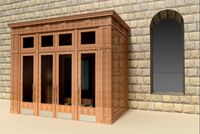
entry group
...osquid
royalty free 3d model entry group for download as iam on turbosquid: 3d models for games, architecture, videos. (1236931)
turbosquid
$6
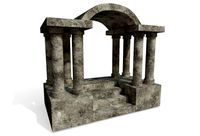
Columned Entry
...yalty free 3d model columned entry for download as ma and obj on turbosquid: 3d models for games, architecture, videos. (1536342)
turbosquid
free
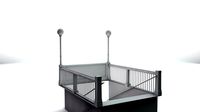
Metro entry
...y free 3d model metro entry for download as c4d, fbx, and stl on turbosquid: 3d models for games, architecture, videos. (1232938)
turbosquid
$8

Entry Table
...e 3d model entry table for download as 3ds, obj, dae, and stl on turbosquid: 3d models for games, architecture, videos. (1208726)
turbosquid
$45
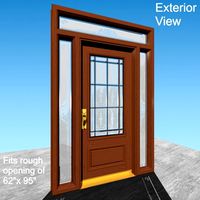
Entry Door001
... available on turbo squid, the world's leading provider of digital 3d models for visualization, films, television, and games.
turbosquid
$40

Entry Door
... available on turbo squid, the world's leading provider of digital 3d models for visualization, films, television, and games.
turbosquid
$39
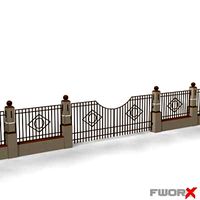
Entry gate007_max
... available on turbo squid, the world's leading provider of digital 3d models for visualization, films, television, and games.
turbosquid
$8
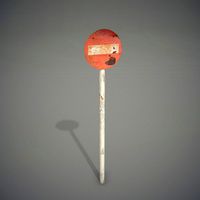
No entry sign
... available on turbo squid, the world's leading provider of digital 3d models for visualization, films, television, and games.
turbosquid
$5
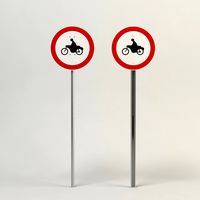
No entry for motorcycles
... available on turbo squid, the world's leading provider of digital 3d models for visualization, films, television, and games.
design_connected
$11
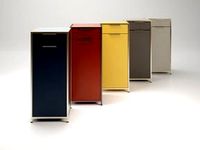
Dita Entry cabinet
...ta entry cabinet
designconnected
ligne roset dita entry cabinet computer generated 3d model. designed by pagnon & pelhaitre.
Way
3ddd
$1

Backhausen Fabric WAY
...x 2014, 2013, 2011,
obj
__________________________________________http://www.backhausen.com/en/products/fabric-catalog/
design_connected
$16

Way Turqoise
...way turqoise
designconnected
way turqoise computer generated 3d model. designed by gemvall, karin.
turbosquid
$9

Gerard Way
...
royalty free 3d model gerard way for download as max and fbx on turbosquid: 3d models for games, architecture, videos. (1682114)
3ddd
$1

Formerin - MY WAY
... my way , угловой
диван formerin - my way, в размере, с текстурами.
turbosquid
$7

End Way
...ty free 3d model end way for download as ma, ma, fbx, and obj on turbosquid: 3d models for games, architecture, videos. (1688865)
turbosquid
$15

American way
... available on turbo squid, the world's leading provider of digital 3d models for visualization, films, television, and games.
turbosquid
$1
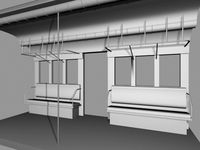
sub way
... available on turbo squid, the world's leading provider of digital 3d models for visualization, films, television, and games.
3ddd
$1

Pregno / WAY OF LIFE
...pregno / way of life
3ddd
гардероб , pregno
гардероб pregno way of life
design_connected
$16

Team - 4 ways
...team - 4 ways
designconnected
arper team - 4 ways computer generated 3d model. designed by lievore, alberto.
design_connected
$11

Wai Highboy Highboard
...wai highboy highboard
designconnected
bonaldo wai highboy highboard computer generated 3d model. designed by mazzer, mario.
Light
archibase_planet
free
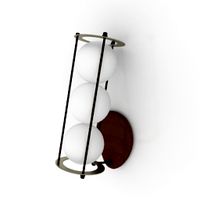
Light
...light
archibase planet
lamp lighting light
light - s2 - 3d model for interior 3d visualization.
archibase_planet
free
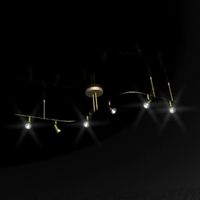
Light
...light
archibase planet
light luminaire lighting
light l0465 - 3d model (*.gsm+*.3ds) for interior 3d visualization.
3d_export
$5
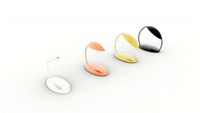
lighting
...lighting
3dexport
lighting
3d_export
$5
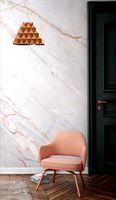
lighting
...lighting
3dexport
lighting in livingroom
turbosquid
$3

Lighting Tree with Lights
...d model lighting tree with lights for download as max and 3ds on turbosquid: 3d models for games, architecture, videos. (1585507)
archibase_planet
free
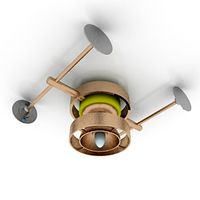
Light
...light
archibase planet
luster lighting solution
light - s - 3d model for interior 3d visualization.
archibase_planet
free

Light
...light
archibase planet
luster lamp lighting
light 1 - 3d model for interior 3d visualization.
archibase_planet
free

Lights
...lights
archibase planet
surgical lights surgical lamp
surgical lights (floor) - 3d model for interior 3d visualization.
archibase_planet
free
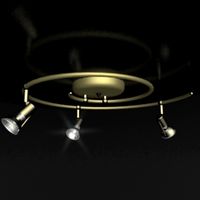
Light
...light
archibase planet
lighting luminaire candlelight
light l0463 - 3d model (*.gsm+*.3ds) for interior 3d visualization.
3d_export
$18
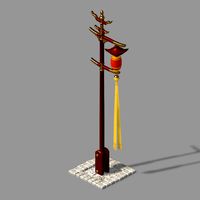
street light-lighting-light-xia bing
...
3dexport
street light-lighting-light-xia bing<br>max 2015 v-ray 3 max 2015<br>textures<br>all files in zip...
